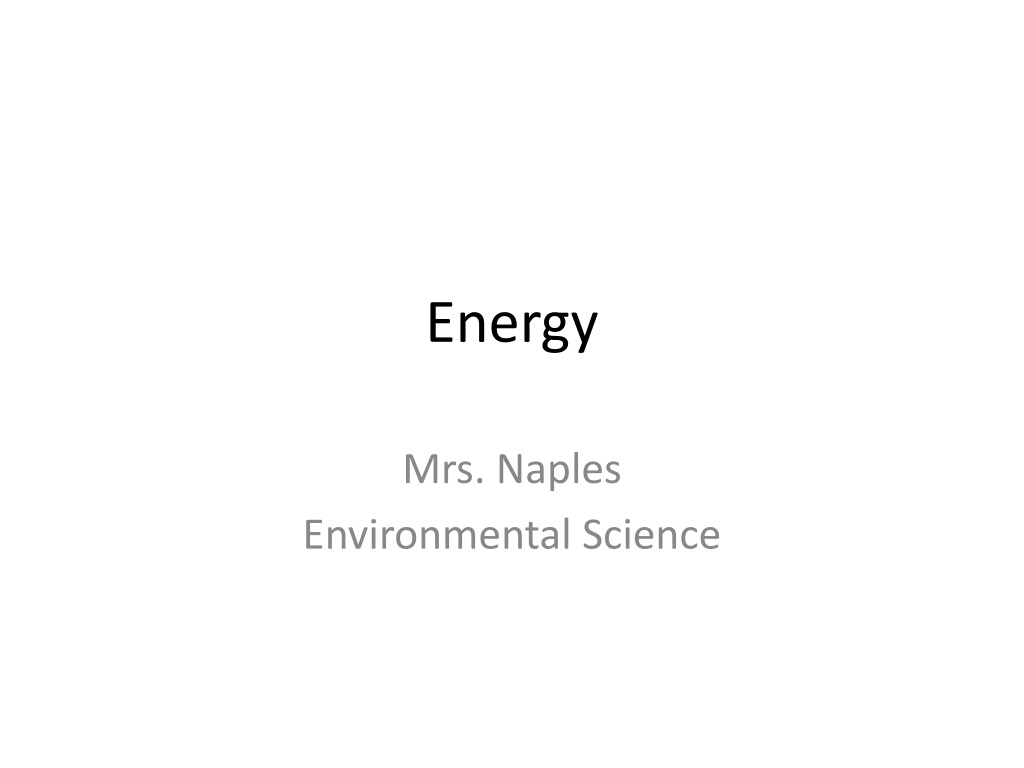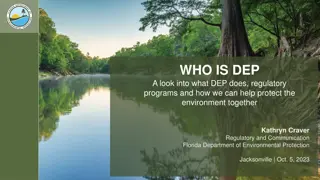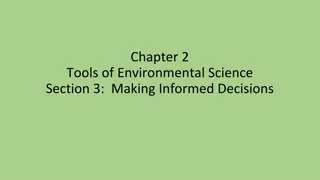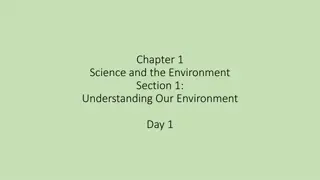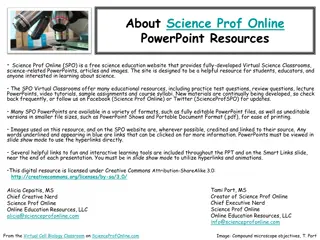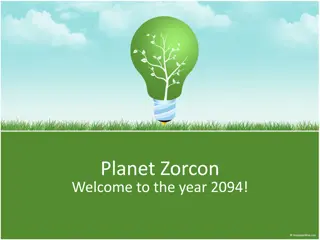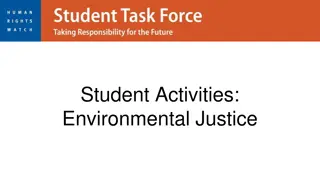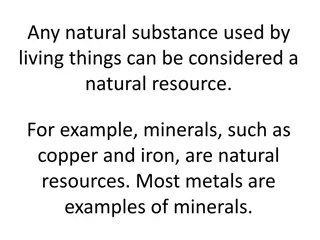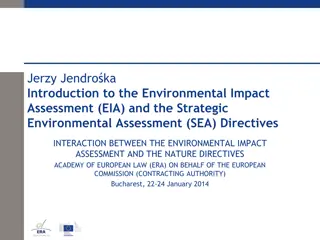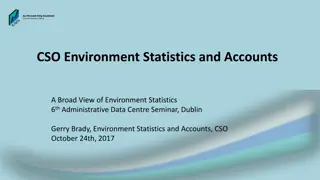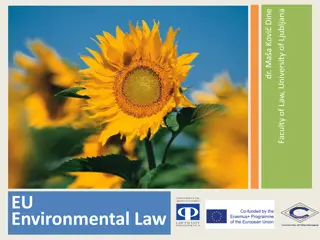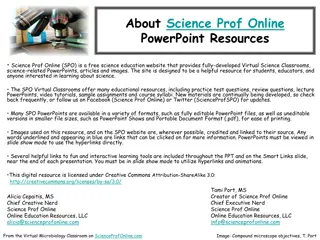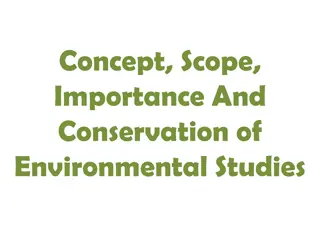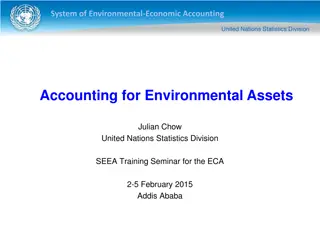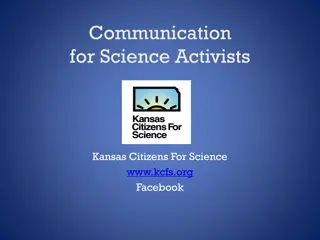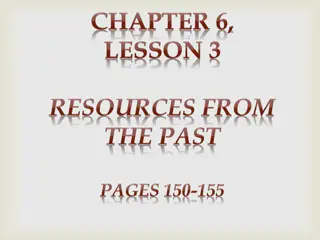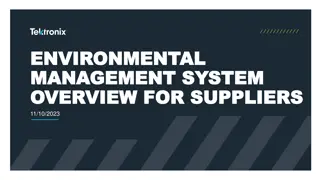Nonrenewable Resources in Environmental Science
Nonrenewable resources are materials or energy sources that cannot be replaced within a human lifetime. They include ores, fossil fuels, metallic and nonmetallic ores, rocks, and coal, formed over millions of years and used in various industries. Learn about the formation and types of nonrenewable resources and their impact on the environment.
Uploaded on Oct 10, 2024 | 0 Views
Download Presentation

Please find below an Image/Link to download the presentation.
The content on the website is provided AS IS for your information and personal use only. It may not be sold, licensed, or shared on other websites without obtaining consent from the author.If you encounter any issues during the download, it is possible that the publisher has removed the file from their server.
You are allowed to download the files provided on this website for personal or commercial use, subject to the condition that they are used lawfully. All files are the property of their respective owners.
The content on the website is provided AS IS for your information and personal use only. It may not be sold, licensed, or shared on other websites without obtaining consent from the author.
E N D
Presentation Transcript
Energy Mrs. Naples Environmental Science
Nonrenewable Resources What is a nonrenewable resource? A material or energy source that ___________ be replaced during a ____________________. Most nonrenewable resources took millions of years to form.
Nonrenewable Resources Ores Rocks Fossil Fuels Coal Petroleum and Natural Gas
Nonrenewable Resources Ores deposits of minerals from which valuable metals and nonmetals can be obtained for profit metallic nonmetallic
Nonrenewable Resources Metallic Ores iron, aluminum, copper, zinc, lead, silver, gold and manganese(among others) Formed by chemical reactions from hot solutions percolating through cracks in the Earth s rocks.
Nonrenewable Resources Nonmetallic Ores fluorite, sand, gravel, diamonds, gypsum, sulfur, talc and quartz Many are used for building materials such as cements. Used as fertilizers Food preparation and preservation Jewelry and industrial abrasives
Nonrenewable Resources Rocks Mixtures of one or more minerals Common to PA are marble, sandstone, granite, limestone, shale and slate Many used for decorative purposes both inside and outside of buildings
Nonrenewable Resources Fossil Fuels Take millions of years to form Usually burned to create energy In the U.S. coal, oil and natural gas are the most commonly used fossil fuels In developing countries, wood, charcoal and peat are most commonly used
Nonrenewable Resources Coal Formed in wetland areas millions of years ago Plants die, become buried, and undergo physical and chemical changes that take place over long periods of time There are 4 stages and types of coal Peat Lignite Bituminous anthracite
Nonrenewable Resources Stages of coal 1ststage is peat 50% carbon Light Porous Plant and other organic matter visible Burns very smoky Does not create significant heat
Nonrenewable Resources Stages of coal 2ndStage Lignite Peat becomes compressed Organic matter is pressed out Soft and brown 70%carbon Burns somewhat smoky and somewhat hot
Nonrenewable Resources Lignite
Nonrenewable Resources Stages of coal 3rdstage Bituminous 85% carbon Called soft coal Burns hot and less smoky that peat and lignite Found in Pittsburg area
Nonrenewable Resources Bituminous
Nonrenewable Resources Stages of coal 4thstage Anthracite Very hard and black Burns very hot and clean 90% carbon Found in upstate PA
Nonrenewable Resources Stages of coal formation
Nonrenewable Resources Petroleum and Natural Gas Made from the remains of plants, bacteria, algae and microscopic marine organisms Commonly created in coastal marine waters Chemical and physical reactions take place after remains are buried for millions of years
Nonrenewable Resources Natural Gas and Petroleum
Renewable Energy Resources A renewable resource can be replaced within the human lifespan Often called alternative energy resources Sun Wind Geothermal Hydropower Nuclear power trash
Renewable Energy Resources Solar Energy Energy from the sun s light and heat Can be used to heat buildings and water and provide electricity Passive solar heat Solar cells Solar thermal systems
Renewable Energy Resources Passive Solar Heating System
Renewable Energy Resources Solar Cells
Renewable Energy Resources Thermal Solar System
Renewable Energy Resources Wind Used in many developed countries to produce electricity Blades on a wind turbine drive a generator The faster the speed, the more electricity generated Groups of turbines are called wind farms
Renewable Energy Resources Hydropower Harnessed energy from falling water Used to generate electricity Dams use hydroelectric Clean, renewable, NO waste
Renewable Energy Resources Hydroelectric Power
Renewable Energy Resources Geothermal Power Heat inside of the earth Can be used to create electricity Availability is limited Can be depleted
Renewable Energy Resources Hot Dry Rock Method
Renewable Energy Resources Biomass Organic matter in plants and plant products Litter from animals Usually burned Wood
Renewable Energy Resources Waste Can be burned Gasses can be captured Paper industry Sugar industry
